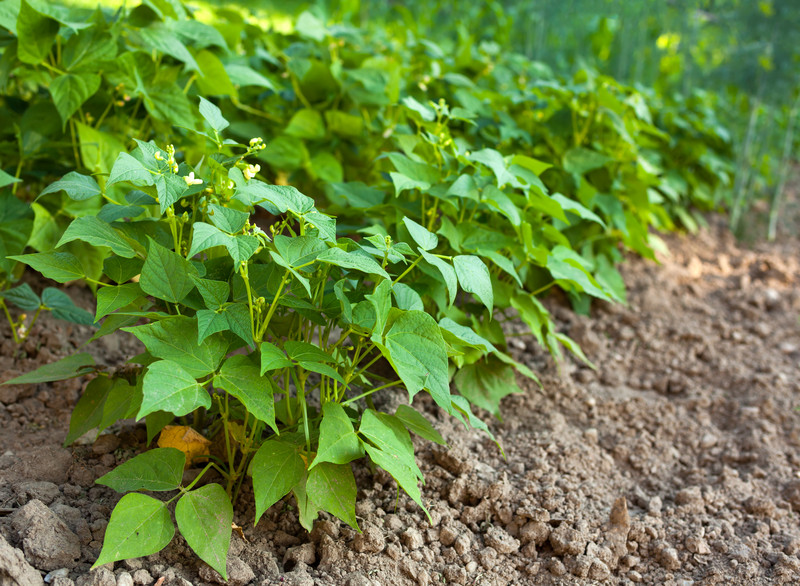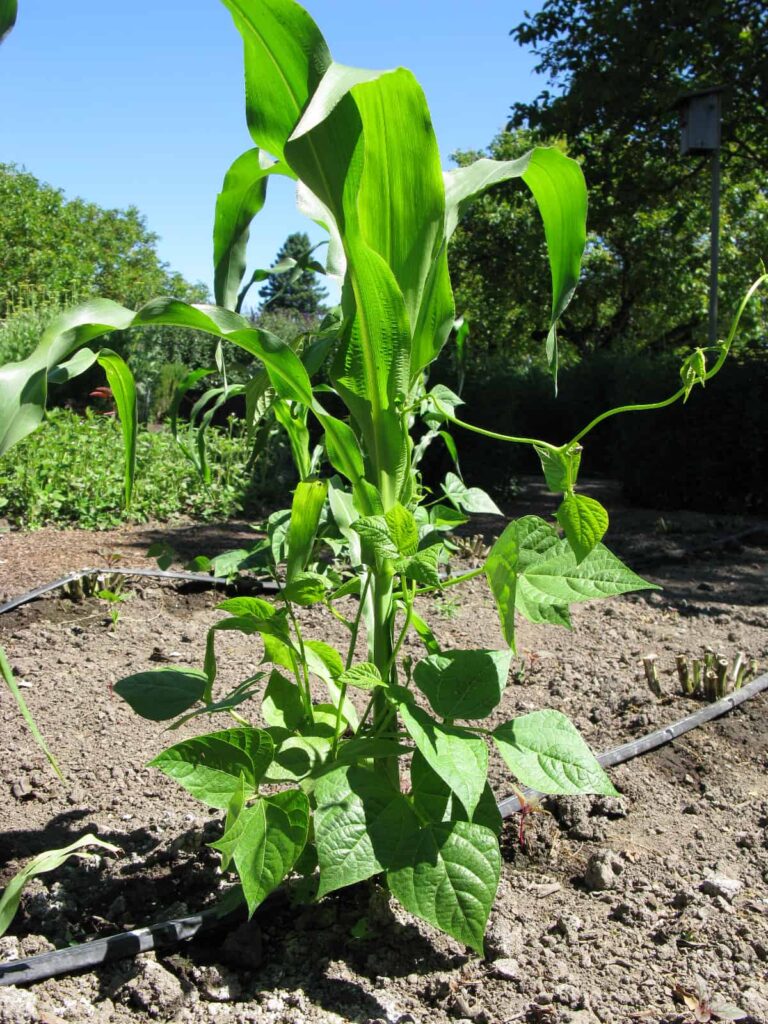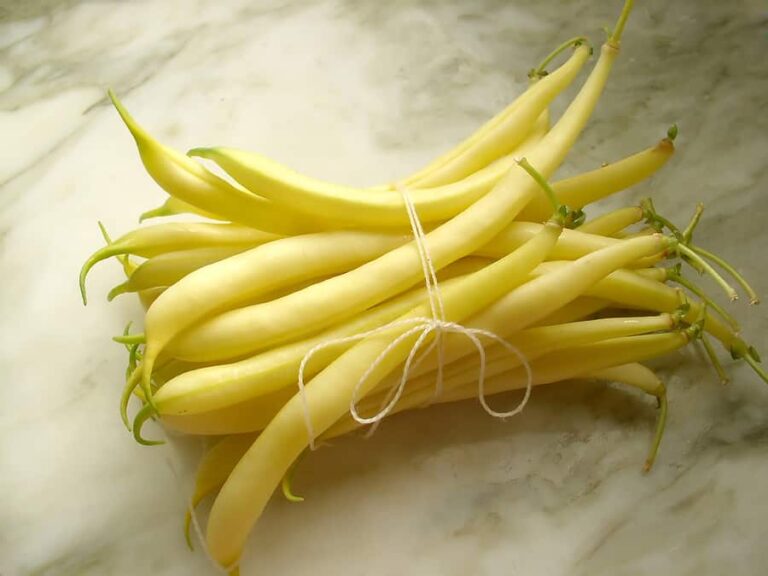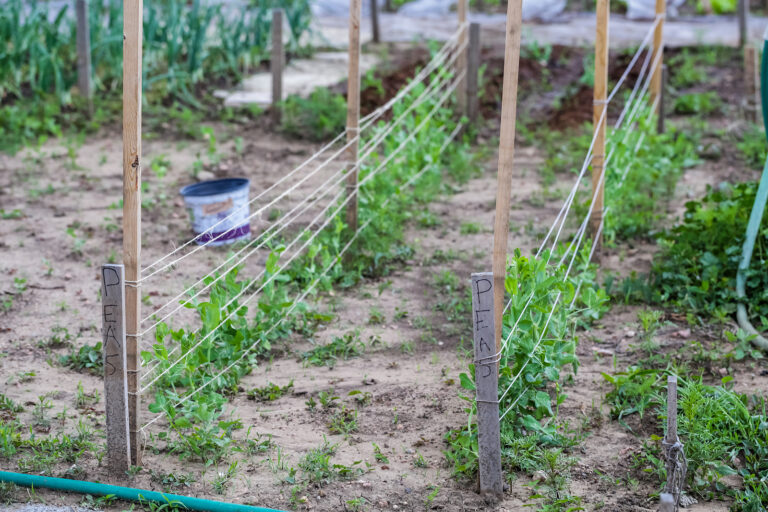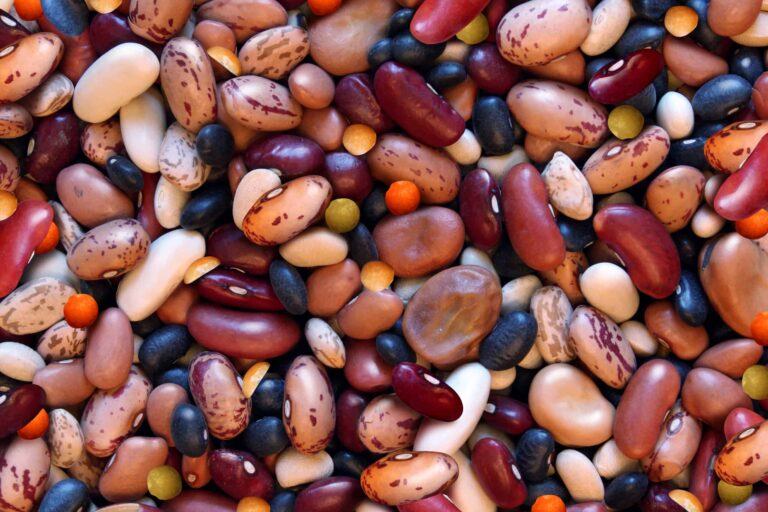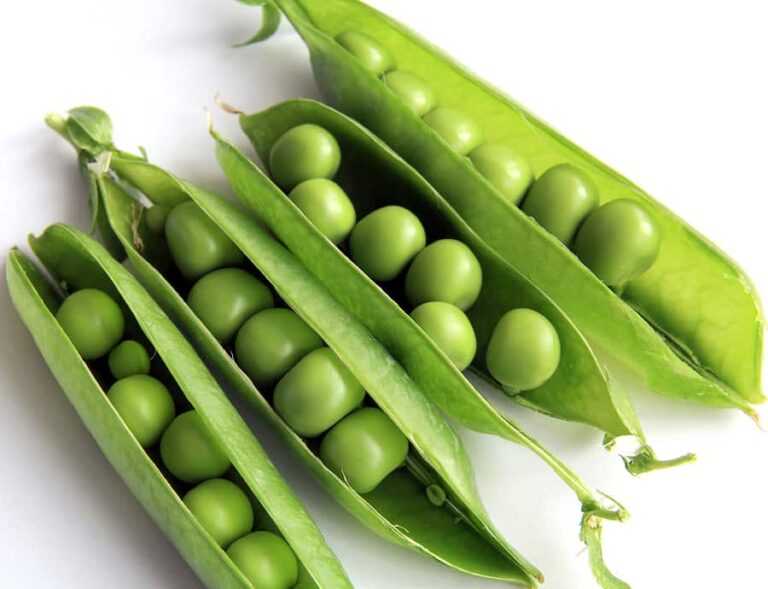Types of Beans for Home Gardens
I’ve grown beans in my garden for years, experimenting with different varieties to find the best flavors, yields, and growing conditions. Beans are legumes, meaning their seeds or pods are edible, but they aren’t classified as peas or lentils (which are also legumes). If you’ve ever split open a bean pod, you’ve likely noticed the neat row of seeds inside—this is a key characteristic of legumes, which have double-seamed pods.
There are two main types of beans I’ve grown: snap beans (also called green beans) and shell beans (grown for their seeds, either fresh or dried).
- How to Plant and Grow Snap Beans for a Productive Harvest
- A Guide to Growing Snap Beans in Containers
- Types of Beans for Home Gardens
- Snap Bean Seed Starting Tips
- Snap Bean Varieties: Which One Should You Grow?
- Harvesting, Storing, and Cooking Snap Beans: A Gardener’s Guide
- The Ultimate Guide to Growing Beans: From Planting to Harvest
- Common Bean Pests and Diseases: What Every Gardener Should Know
Snap Beans (Green Beans)
Snap beans are some of the easiest and most rewarding crops to grow in a home garden. These beans are harvested while the pods are still tender and fleshy. When you pick them fresh, they make a satisfying “snap” when broken in half, which is how they got the name snap beans.
In my experience, snap beans are incredibly productive—you can expect to pick them every couple of days once they start producing. While most people picture green beans, snap beans come in yellow (wax beans) and purple varieties as well. Some of my favorite types to grow include haricot vert (thin and tender), scarlet runner beans (which also produce gorgeous red flowers), and yard-long beans (which truly live up to their name!).
Older varieties of green beans had a fibrous string running down the pod’s seam, earning them the name “string beans.” However, modern varieties have been bred to be stringless, making them easier to prepare and eat.
Shell Beans (Fresh and Dried)
If you let snap beans continue growing, they eventually mature into shell beans, where the pod dries out and the seeds inside become fully developed. Fresh shell beans, like lima beans, cranberry beans, and fava beans, are harvested before they dry and have a creamy texture when cooked.
Dried beans, on the other hand, are left on the plant until the pods are completely dry. These include classic soup beans like black beans, kidney beans, navy beans, and pinto beans. One thing I’ve learned the hard way is that timing is everything—if rain comes late in the season, drying beans can mold in the pod before they’re ready to harvest. That’s why I always keep an eye on the forecast when growing dry beans and sometimes pull up entire plants to dry them indoors if needed.
Growing beans has taught me a lot about timing, soil health, and the importance of regular harvesting. Whether you’re growing them for crisp green pods or hearty dried beans for winter soups, beans are a rewarding and versatile addition to any garden.
Bean Types and Classifications
To give you a head start on bean growing, I’ve put together this brief descriptive summary of beans you may want to grow.
Azuki bean or adzuki bean
Azuki bean or adzuki bean (Vigna angularis): small, somewhat square bean shelled at the plump green stage or allowed to dry on the vine and shelled; small red bean dried. Slightly sweet tasting. Used by Chinese and Japanese cooks in steamed rice dishes. Also used to make red bean paste. Annual native to Asia and related to the southern pea. Pods grow 4 to 5 inches (10-12.5 cm) long. Requires 120 warm growing days. Climbing bean.
Black bean or turtle bean
Black bean or turtle bean (Phaseolus vulgaris): medium-size, jet-black dried bean used in Latin American and Caribbean cuisines. Earthy, meaty flavor and a mealy texture. Used in soups, stews, salads, and bean dips; served with pork, rice, and greens. See Dry and Horticultural Beans.
Bush bean
Bush bean is a bean-growing term. Bush beans are determinate plants, meaning they grow to a certain size and then blossom, fruit, and then stop growing. Bush beans grow in a bush-like form to about 15-24 inches (38-60 cm) tall. Bush beans produce edible pods within 60 days and the harvest usually lasts just two or three weeks. After two or three heavy pickings, bush beans are finished. They will then go into decline at which time they can be pulled up and composted.
Butterbean or sieva, civet, or seewee bean
Butterbean or sieva, civet bean (Phaseolus lunatus): a creamy yellow (butter-colored) bean similar to a lima bean but smaller. Blotched seeds turn dark when cooked. Popular in the South. Climbing bean.
Chickpea or garbanzo bean
Chickpea or garbanzo bean (Cicer arietinum): short, swollen pods about 1 inch (2.5 cm) long and contain 1 or 2 wrinkled buff-colored seeds. Seeds have a firm texture and nutty flavor. Use raw in soups, stews, and salads, and roasted and eaten as a snack. Also called ceci. Originally from southeastern Asia, they are a staple in Mediterranean countries and India. Rich in protein and starch. Look more like vetch than peas or beans. Prefer dry heat. Bush bean.
Cranberry bean
Cranberry bean (Phaseolus vulgaris): plump, whitish-green pods with wine-colored streaks grow to about 3 inches (7.5 cm) long and ½ inch (1.3 cm) wide. Shelled beans can are mottled with reddish markings. Use fresh or dried. Add to stews and soups, especially Italian minestrone, or boil and serve as a side dish. Flavor reminiscent of chestnuts.
Dry and horticultural beans
Dry and horticultural beans (Phaseolus vulgaris): eaten green or dried for winter use; beans developed for green or dry shelled seeds; bred to be shelled when their large seeds reach full size. Believed to be the ancestors of snap beans. Young pods can be eaten as snap beans. Many varieties range in color from white to yellow, red, pink, brown, speckled, and black; some may be splashed with crimson or maroon. Best known dry beans are kidney, pinto, navy, and black turtle beans. Seldom grown in home gardens since they are inexpensive and commercially grown. The French flageolet is a horticultural bean grown in home gardens.
Fava bean or broad bean
Fava bean or broad bean (Vicia faba): large, flattened, light green pods grow 6 to 12 inches (15-30 cm) long and have a white-woolly lining. Eat the entire pods raw when half-grown with oil and salt or cooked like snap beans. Older pods are shelled; moist green beans inside should be peeled. Add to soups and stews or dress with butter or oil; serve cold as a salad dressed with vinaigrette. Require 70 days that are cool but frost free. Harvest in late spring and early summer. Some may be allergic to mature seeds.
Flageolet
Flageolet (Phaseolus vulgaris): small, creamy-white to pale-green seeds of a thin, flat, French shell bean with an inedible green pod; pods grow to about 3 inches (7.5 cm) long. A variety of haricot beans developed in France in 1872. Braise or add to soups and stews or eat cold as a salad with lemon and oil. Available dried.
Great Northern bean
Great Northern bean (Phaseolus vulgaris): medium to large, flat, kidney-shaped, white shell bean with a mild flavor. Used dried in soups, stews, baked bean dishes, and salads.
Green bean
Green bean (Phaseolus vulgaris): edible long, slender green pod bean, also called string bean because of a fibrous string that runs down the side. Modern hybrids are stringless.
Haricot bean
Haricot bean (Phaseolus vulgaris): general term for a wide variety of beans that originated in America and were brought to Europe in the sixteenth century, including the red kidney bean and predecessor of the flageolet. Haricot often refers specifically to the small white bean used for baked beans.
Haricot vert
Haricot vert (Phaseolus vulgaris): the French phrase for “green bean.” A slender (⅛ inch/0.3 cm in diameter) stringless bean, sweet and tender, with very small seeds. Use fresh: steam briefly then sauté in butter or oil or steam and dress with vinaigrette and serve chilled or at room temperature. Also called the French green bean and French bean.
Kidney bean or cannellini bean
Kidney bean or cannellini bean (Phaseolus vulgaris): kidney-shaped bean of a common shell bean, either red or white skinned with cream-colored flesh and bland flavor. White kidney beans are called cannellini beans. Meaty flavor and mealy texture. Use in salads and in simmered dishes such as soups, stews, and chili. Retains shape and texture cooked.
Lentil
Lentil (Lens ensculenta); flat, disk-like seeds of a leguminous plant used dried. A lentil is not specifically a bean but is often lumped with beans. Lentils come in a variety of shapes and sizes. Puy lentil has dark green skin with blue marbling. The orange lentil, also called Egyptian lentil, is a dehusked brown lentil. Green lentil, also called continental lentil, is larger and slightly flatter. Dhal or dal is the general Hindi term for lentils. Add to soups and stews; boil until tender, drain, and dress with vinaigrette for a cold salad; or boil until tender, drain, and reheat with oil, butter, or bacon fat for a side dish.
Lima bean or butter bean
Lima bean or butter bean (Phaseolus lunatus): large, flat, kidney-shaped, light-green seeds that mature to creamy-yellow and can be eaten raw after shelling; waxy texture. Also used dried. Add to soups and stews; or boil until tender, drain and dress with vinaigrette and serve as a salad. Larger than butter beans but often crossed with butter beans. The lima bean is sometimes called the Madagascar bean. Native to Peru and named after the capital there, but pronounced “LY-muh.” Both climbing and bush forms.
Mung bean or green gram
Mung bean or green gram (Vigna radiata): small cylindrical olive-green seed used mostly for sprouting (edible bean sprouts) or for grinding to bean meal; green pods can be used as snap beans or mixed with green seeds shelled from fully grown pods. Bean is commonly green but also brown and black varieties. Favored in Indian, Chinese, and Asian cookery. A slender-podded relative of southern peas. Tolerate high heat and humidity and require a long, warm growing season. Bush type.
Navy bean
Navy bean (Phaseolus vulgaris): small, oval, kidney-shaped white bean; a haricot bean. Use in soups, stews, baked beans, or marinated in salads. The name is believed to have come from its importance to the Navy’s shipboard kitchen stock. Also called Boston beans and Yankee beans.
Pinto beans
Pinto beans (Phaseolus vulgaris): medium-sized, flat, oval seed, pink to beige with mottled brown spots; a variety of kidney beans. The name in Spanish means “painted” or “spotted.” Dried and used in southwestern and Mexican soups, stews, and chilis. The creamy texture when cooked; delicious puréed. Native to India where it is called toor dal. Also called crabeye bean and red Mexican bean.
Pole bean
Pole bean is a bean that grows on a vine and should be trained vertically on a pole or trellis. Pole beans grow quickly into large, full-bodied plants. These plants produce in about 60 days and will bear for several weeks. Young pole bean pods should be picked frequently so that the plant will remain productive. These plants are classified as indeterminate because their size and period of harvest vary.
Purple snap bean
Purple snap bean (Phaseolus vulgaris): a snap bean with velvety skin that is dark, dark purple. When cooked, this bean turns green.
Red bean
Red bean (Phaseolus vulgaris): a medium-sized, kidney-shaped bean with dark red skin and flesh. Used dry.
Scarlet runner bean
Scarlet runner bean (Phaseolus coccineus): flat, broad, green pod and small red-streaked beige-colored seeds with purple and black markings; similar but more flavorful than the snap bean. Steam and serve hot with butter or oil, or cold with vinaigrette. Add to soups or mixed vegetable salads. Harvest when pods are 3 to 4 inches (7.5-10 cm) long before strings develop in pods. The plant looks like a pole snap bean with scarlet flowers. Climbing or “runner” bean requires a pole or fence; has bright scarlet flowers. Also known as Green Bean, Italian Romano Bean, or Stick Bean.
Snap bean
Snap bean (Phaseolus vulgaris): bean harvested while immature and the pod is edible. Snap beans include green or string beans, Italian Romano beans, yellow wax beans, and purple-podded beans. Pods range from 5 to 12 inches (12.5-30 cm) long and are oval, round, or broad and flat and green, yellow (wax beans), or purple. Most are stringless; heirloom varieties have strings and fiber. Use steamed, braised, sautéed, stir-fried, or pickled. Use in soups or mixed vegetable combinations. Bush and pole types.
Soybean or soya bean
Soybean or soya bean (Glycine max): pods are tan to black with soft outer fuzz; two to four beans inside from pea to cherry sized, can be red, yellow, green, brown, black, or mottled. Can be harvested green or left to dry; require soaking for several hours and cooking for 4 hours to be digestible; dry seeds are black or yellow. Use as you would lima beans or fava beans; shell and boil just like English peas. Native to eastern Asia; require 120 warm, frost-free days to mature.
White bean
White bean (Phaseolus vulgaris): a generic term for ivory-white skinned kidney-shaped beans; a delicate bland flavor. Varieties include marrow bean, great Northern bean, navy bean, and pea bean. Also called a white navy bean, pea bean, or haricot. Used in baked beans.
Winged bean
Winged bean (Psophocrapus tetragonolobus): green, purple, or reddish pods to 9 inches (22.5 cm) long with 4 fluted wings along the length. Edible pods are high in protein with a flavor similar to the cranberry bean and a starchy green bean texture; pods can be steamed; roast ripe or dry seeds to make them digestible. Native to the Old World tropics; does not fruit until early fall and requires a frost-free harvest period. Climbing type.
Yard-long bean or asparagus bean or Chinese long bean
Yard-long bean or asparagus bean or Chinese long bean (Vigna unguiculata): thin, green pods 18 to 24 inches (45-60 cm) long can be eaten like a snap bean or shelled. Use fresh in stir-fries or steamed. Slightly milder than a snap bean with a crunchier texture. Climbing bean.
Yellow snap bean or wax bean
Yellow snap bean or wax bean (Phaseolus vulgaris): a snap bean with a yellow color and somewhat waxy texture.
Related articles:
How to Plant and Grow Snap Beans
How to Harvest and Store Snap Beans
Bean Growing Problems: Troubleshooting
Five Ways to Quick Cook and Serve Snap Beans
How to Can Green Snap Beans for Beginners
Cooking and Serving Yard-Long Beans
How to Grow Plant, Grow, and Harvest Chickpeas and Garbanzo Beans
How to Cook and Serve Chickpeas
How to Plant and Grow Lima Beans
How to Plant, Grow, and Harvest Broad Beans and Fava Beans
Five Ways to Cook and Serve Fava Beans
All About Dried Beans – Growing and Cooking
Container Growing Beans – Plant, Grow, and Harvest Tips
Garden Planning Books at Amazon:

